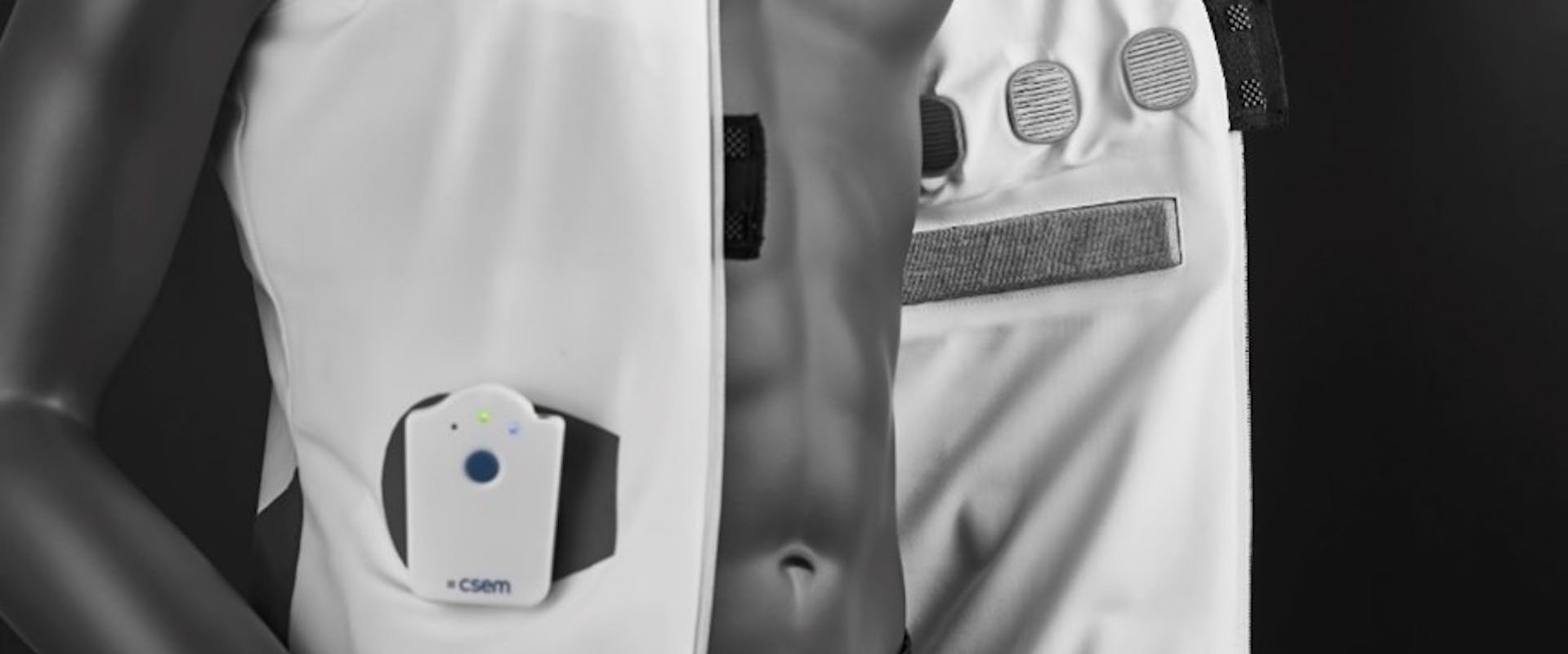
CSEM's wearable vest for monitoring respiratory diseases using electrical impedance tomography.
WELMO vest for continuous lung monitoring
To enable the long-term and non-invasive monitoring of respiratory diseases, a European consortium developed WELMO* – a smart wearable vest that can provide 24/7 lung monitoring. CSEM was at the heart of this project, creating the system’s centerpiece, the wearable vest. The vest has 18 embedded sensors that can record in parallel both chest sounds and thoracic electrical bioimpedance (a diagnostic method to measure cardiac output non-invasively).
Patient-centric solution for monitoring respiratory diseases
The patient’s chest sounds can be picked up at six traditional locations on the lungs and upper airways where medical doctors typically place their stethoscope during an examination (four auscultation spots around the sternum’s apex, two below the clavicles). And the patient’s electrical bioimpedance is measured by 16 sensors placed around the chest’s circumference at the sternum’s apex. The bioimpedance signals are used for electrical impedance tomography (EIT). This radiation-free imaging system can analyze breathing cycles thanks to its high temporal resolution (40 Hz in the case of WELMO).
CSEM’s sensors all work in cooperation, allowing the amount of wiring connecting them to be reduced to a minimum. In this instance, only two wires were required, and if you are wondering if this lack of wire can affect or reduce the quality of the recorded signals – it doesn’t. Instead, it helps minimize patient discomfort and contributes to the overall non-invasive aspect of the vest.



